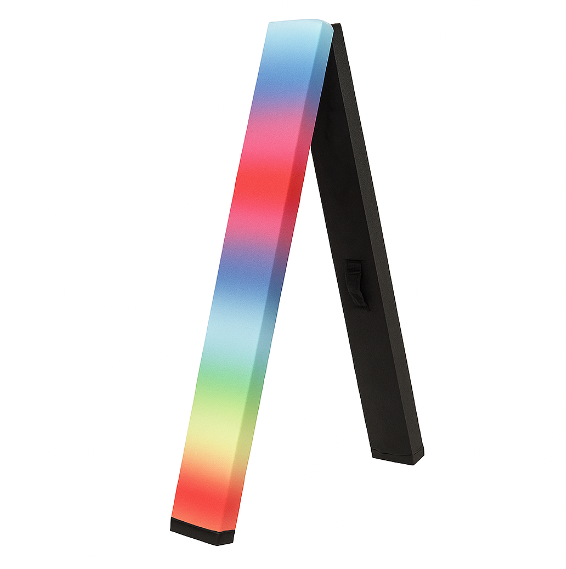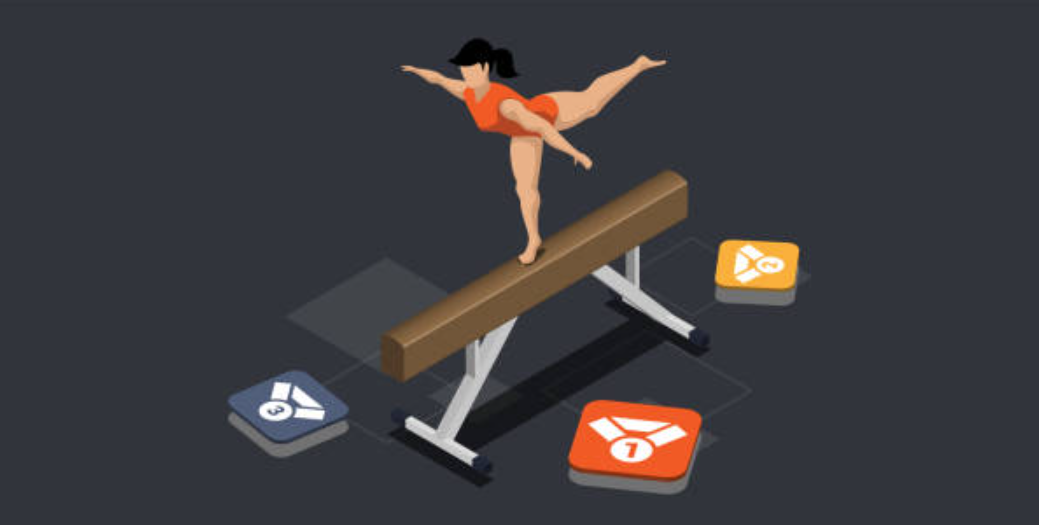Choosing the wrong balance beam could be the difference between building confidence and risking injury in your gymnastics training. Did you know: a good number of UK gyms, schools, and clubs are investing in proper equipment because even for everyday training, a solid beam matters.
Gymnastics beams are more than just equipment. It’s the basis for mastering balance, poise and the ability to perform with precision during your gymnastics training.
In this guide, you will learn what to look for, what types of beams are available, and what key features gymnastics beams share with real-world examples.
Let’s dive in.
Understanding What Makes a Quality Gymnastics Training Beam
Building strong skills begins with good equipment. Not all beams are equal, and if you know what makes a beam high quality, you’ll pick something that helps progress rather than hold you back.
Construction Materials That Impact Training Performance
A solid beam often has a core (wood, foam or aluminium), then a surface cover that gives grip and comfort. For example, some practice beams might use foam inside to make them gentler for beginners, while competition-style beams use firmer cores for a consistent feel.
Surface covers like suede or fabric covers provide more grip than slick finishes.
Consider ways the beam spreads its weight, and how it resists wobble. If it shifts when someone lands or moves quickly, that undermines training.
Safety Standards Every Training Beam Must Meet
In the UK context, you’ll want equipment that complies with relevant safety norms. For example, one UK beam meets BS1892 standard and features a 100 mm wide top non-slip surface and flame-retardant outer cover. Also, if you’re buying competition-style, you’ll see specs like “FIG approved”.
Padding, anti-slip surface and stable base are essential for safety.
Size and Dimension Specifications for Proper Practice
Here’s what to check:
- Width: Regulation beams for competition are about 10 cm (4 inches) wide.
- Length: Many are around 5 m long for full routines.
- Height: Training beams may be lower; competition ones may be fixed higher. For example, one “training beam” specification: 3.66 m long × 100 mm wide × 610 mm high.
- Space: Make sure you have enough room around the beam for safe mounting, dismounting and movement.
Different Types of Gymnastics Beam Configurations for Training Facilities
If you’re looking to choose an institution, club or multi-purpose area, it’s important to understand which format of beam is the most effective.
Folding Balance Beam Systems for Space Optimisation
These are great if you have limited space or share the area for other sports. A beam that folds or is portable means you can clear the space when not in use.
Fixed Installation Beams for Dedicated Training Centres
If you have a dedicated gym area or club facility, a permanently installed beam gives the greatest stability. You mount it once, you know exactly how it stands, and athletes get used to the feel. Long-term investment value is high here.
Adjustable Height Beams for Progressive Skill Development
Beams that allow you to vary the height are useful if you train beginners and advanced gymnasts in the same facility. For example, you might start lower for early learners and raise it as they progress.
Key Features to Evaluate When Selecting Your Gymnastics Balance Beam
If you’re ready to select a beam, you should focus on the aspects that affect the safety of your family, their longevity and efficiency.
Surface Grip Technology for Confident Performance
Surface grip matters: if the athlete cannot trust the surface, they hesitate. Suede or textured coverings aid grip; synthetic or slick surfaces may be less reliable.
Structural Stability Features That Prevent Accidents
Check how wide the base is, how the legs or supports distribute weight, and if the beam wobbles when someone steps or lands. Rubber feet or stability pads help protect the floor and reduce movement.
Portability and Storage Solutions for Facility Management
AirTumble’s folding gymnastics beams are lightweight, portable, and easy to store, perfect for shared spaces.

Durability Indicators for Long-Term Investment Value
Look for warranty details, whether replacement parts are available, and how the beam resists wear and tear.
Real-World Applications Across Different Training Environments
Here’s how real clubs, schools and centres use beams in practice.
Gymnastics Club Implementation Strategies
Clubs often deploy several beams at once: beginner beams for warm-up, regulation beams for skill work and competition beams for final prep.
School Physical Education Programme Integration
Schools often need beams that fold or can be stored easily, because the hall is used for many sports. Safety is a key consideration, especially where classes are large.
Competition Preparation Facility Requirements
Facilities prepping athletes for competition may match the exact beam specs athletes will face in meets.
Elevate Your Gymnastics Programme with the Right Beam Investment
You need equipment that is safe, durable, versatile and matched to the skill levels you train. Equipment quality directly impacts athlete confidence and skill progression. Selecting the right gymnastics beam transforms training quality and delivers measurable athlete development results. The foundation of excellence in gymnastics begins with equipment you can trust. When you invest in a well-designed beam, you invest in athlete success, growing your programme and maintaining high standards. Every champion’s path includes countless confident steps on reliable training equipment; make sure yours provides that foundation for greatness.
Explore AirTumble’s professional range of gymnastics balance beams and foldable gymnastics beams. With premium construction, safety-certified designs, and versatile configurations, find the gymnastics beam for sale that meets your facility’s needs today.
FAQ’s
What size gymnastics balance beam is best for training facilities?
A regulation width is about 10 cm (4 inches) and a length of around 5 m for competition beams. For training facilities, you may select lower-height or adjustable-height versions.
How do folding balance beams compare to fixed beams for safety?
When properly planned and maintained When properly maintained and designed, portable beams and folding beams can be constructed to meet the safety standards of fixed structures.
What’s the difference between foam and wooden or firm-core beams?
Foam or softer core beams are typically utilised for beginner or early training as they are gentler. Firm-core beams (wood, aluminium) are used for advanced training and competition because they provide a consistent feel. This relates to surface covering and construction.
How often should gymnastics clubs replace their balance beams?
It varies. With proper maintenance and use, a good beam should last several years.
Are adjustable height beams suitable for competitive training?
Yes, for parts of training (especially intermediary skill levels), but for serious competition preparation, fixed-height beams matching competition specs might be preferred to replicate the actual competition feel.
What safety certifications should UK gymnastics equipment meet?
Check for conformity to British (BS) and European (EN) standards for equipment and for beams that are competition grade, ensuring that they are approved by recognised bodies such as FIG.




Leave a comment